-
-
학생용 무료 소프트웨어에 액세스하기
차세대 엔지니어에게 힘을 실어주는 Ansys
학생들은 세계적 수준의 시뮬레이션 소프트웨어를 무료로 이용할 수 있습니다.
-
지금 바로 Ansys에 연결하십시오!
미래를 설계하기
시뮬레이션이 다음 혁신을 어떻게 지원할 수 있는지 알아보려면 Ansys와 연결하십시오.
국가
무료 트라이얼
제품 및 서비스
학습하기
회사 정보
Back
제품 및 서비스
ANSYS BLOG
September 16, 2022
Sumitomo Electric Taps Into Ansys’ Material World to Support More Sustainable Electric Motor Designs
Against the backdrop of global warming, manufacturers are looking to find greater efficiencies everywhere, from the vehicles we drive to the appliances we use, and even in industrial equipment. Behind all of these applications are electric motors, with the goal to make them as small, light, and efficient as possible. Manufacturers are interested in axial gap motors (AGMs) as a desirable alternative to power many of these applications. For example, Mercedes and Ferrari are interested in using AGMs in their next-generation vehicles. However, due to material limitations, they are not widely available. Sumitomo Electric Industries (SEI), a manufacturer of soft magnetic composites (SMCs) used its unique material and high-density, high-precision modeling technology to identify the materials for the job with help from Ansys Granta.
Radial gap motors (RGMs) are the most common type of motor today. Although their performance has improved significantly, they come with drawbacks, including torque decreases due to the thin shape of their motor structure. Manufacturers are now looking to AGMs to improve efficiencies in a variety of electrical applications, as they have capacity to deliver high torque despite their thin shape — a critical element in the applications they support. The challenge to manufacturing them is inherent in their design, which requires a three-dimensional-shaped core. This geometry is hard to manufacture using the magnetic steel sheets typically associated with RGMs.
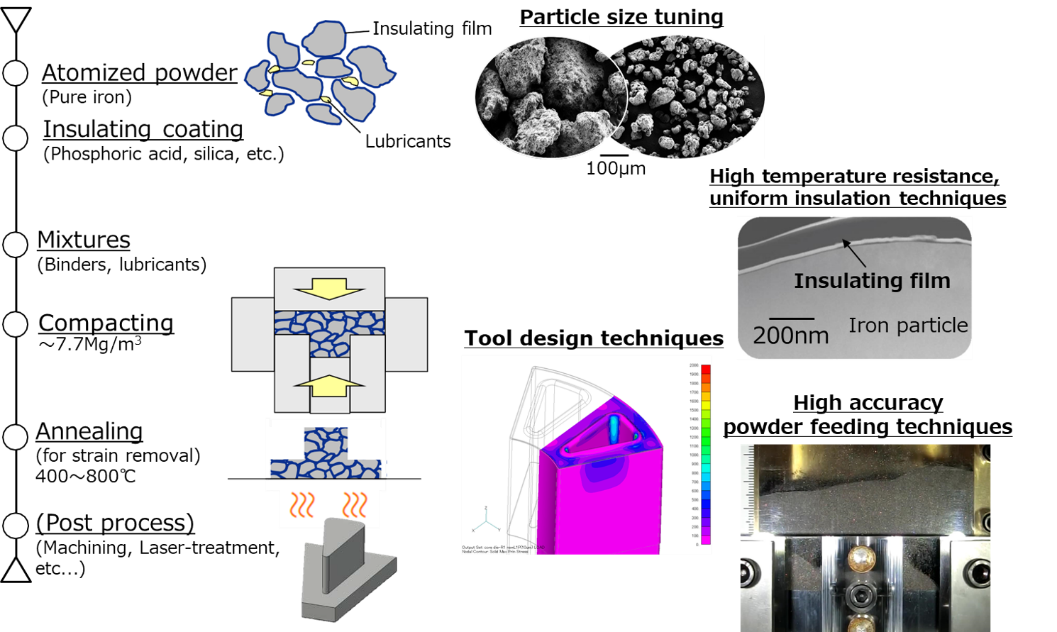
Manufacturing process of an SMC.
Overcoming Material Challenges in AGM Development
To overcome this material challenge, SEI developed SMCs. SMCs offer superior magnetic properties and a much higher degree of geometric freedom in electric machine design than magnetic steel sheets. Creating the final product involves pressing and shaping an insulated iron particle and curing it at a temperature that is optimized to increase mechanical strength, without destroying the insulation. This compacting process enables SEI to achieve the desired magnetic and isotropic — or highly formable — properties needed for electromagnetic applications. These properties help SEI achieve the geometric freedom to support AGMs, automotive fuel injection valves, boost converter reactors (the elements that boost voltage from the battery), and ignition coils.
Watch the video above to learn more about the materials used for Sumitomo's Axial Flux Motors.
Motor cores suitable for AGMs are required to have a high flux density (measure of electric field strength) and low energy loss in the core, contributing to greater overall efficiency. Because the material composition is different than that of magnetic steel sheets (i.e., electrical steel sheets), iron loss due to temperature increase is notably smaller. In other words, the higher the temperature, the lower the iron loss contributing to the loss of machine power. However, the curing and compacting process can have a diminutive effect on tensile strength, which up until now, has made AGMs an impractical option.
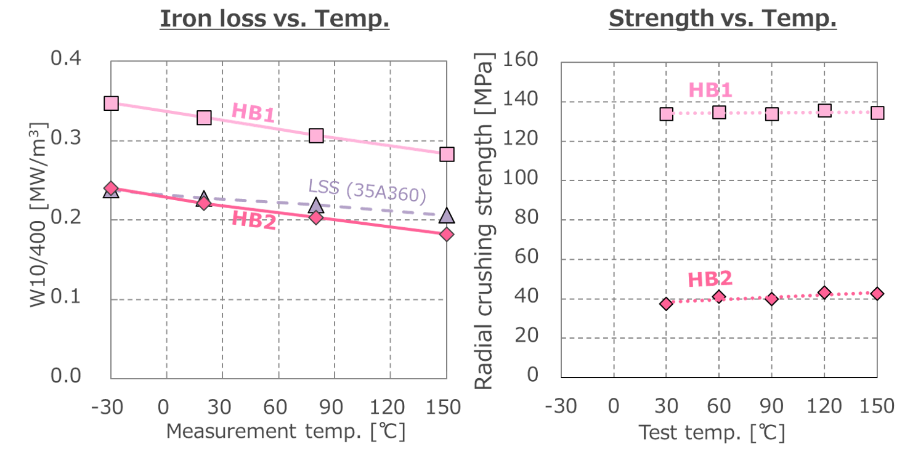
Temperature dependence of Iron loss and mechanical strength.
Greater Accuracy in Material Validation with Ansys Granta
Using material data from Ansys Granta Materials Data Library, SEI accurately analyzed the production process according to the temperature environment used. The software also helped confirm that in the absence of a binder, there was no decrease in material strength in a high-temperature environment.
Using Granta, SEI confirmed the material properties of its unique material and high-density, high-precision modeling technology during development. This technology enabled SEI to deliver SMCs that achieve the high magnetic flux density, mechanical strength, and low iron loss needed to support AGMs on a larger scale.
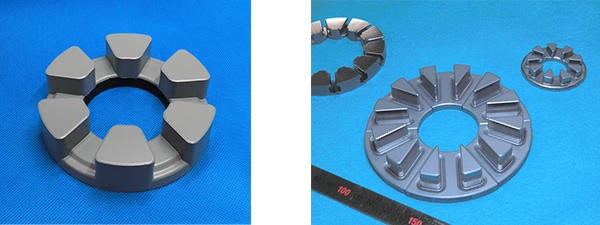
High-performance SMCs for an axial flux motor.
Electrical steel sheets undergo material distortions due to punching and laminating, and the magnetic properties accounted for in Ansys Granta can change significantly as a result. Since SMCs are manufactured by the same method for basic characteristic evaluation and product shape, discrepancies in these properties in Ansys Granta, when used for analysis and actual product evaluation, are minimal, leading to greater accuracy in material validation.
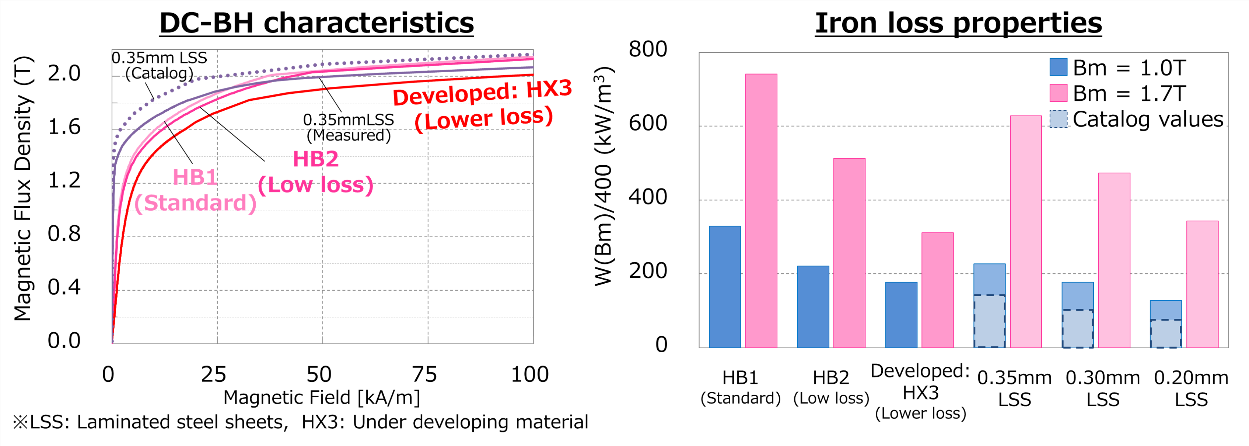
A comparison of the magnetic properties of laminated electrical steel sheets (LSS) commonly used for motors and SEI SMCs. SEI's SMCs HB1 and HB2 are based on pure iron and are compacted at high density, so they have a higher magnetic flux density and lower coercive force than LSSs, that is, low iron loss.
The superiority of the SMCs loss compared to that of the electrical steel sheets becomes more remarkable in the high frequency range. SEI SMCs also engage in iron loss suppression as a function of harmonics in a high frequency range.

Difference in hysteresis loop (key indicator of iron loss due to internal friction) (a) and iron loss (b) with high harmonics imposed and not imposed.
The material characteristics of SMCs also raise the possibility of manufacturing axial flux motors that require a 3D magnetic circuit more easily and reasonably that are significantly smaller and lighter than conventional flat radial flux motors. The outcome is greater efficiencies in production and light weighting coveted by electric vehicle, home appliance, and industrial equipment manufacturers.
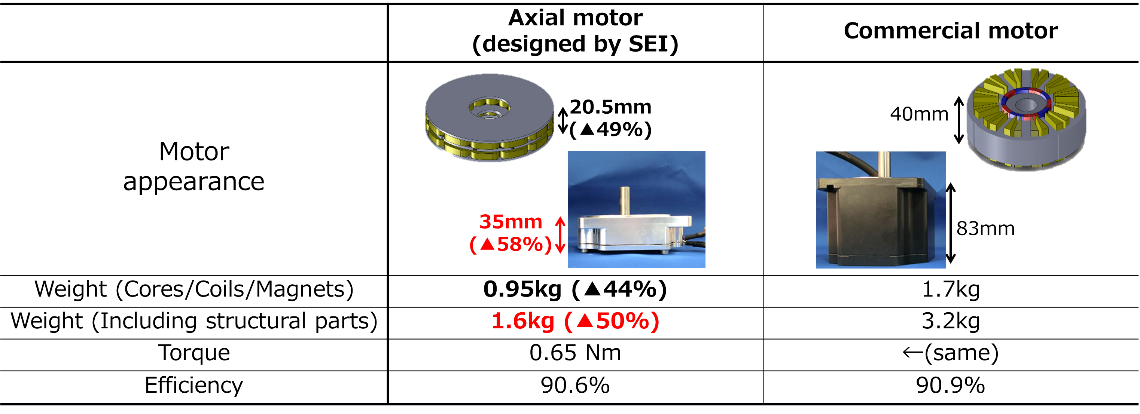
An example of axial flux motor design with SMC.
More Efficient Modeling and Motor Size
Using its SMCs as a basis for development, SEI also created a technology to integrally model the pole shoe, teeth, and yoke of the axial flux motor. This technique requires only one type of mold to manufacture an axial flux motor with its component parts more easily than before. And, since the SMC contains 3D magnetic isotropic properties, it is possible to use a pole shoe yoke integral to magnetics that overhangs in the radial direction — a task that is difficult to manufacture with electrical steel sheets and collects a large amount of magnetic flux from the rotor. The Ansys Granta-enabled SMCs also make it possible to manage the inflow of magnetic flux into the winding, and to realize smaller motor size and higher efficiency as opposed to using magnetic steel sheet.
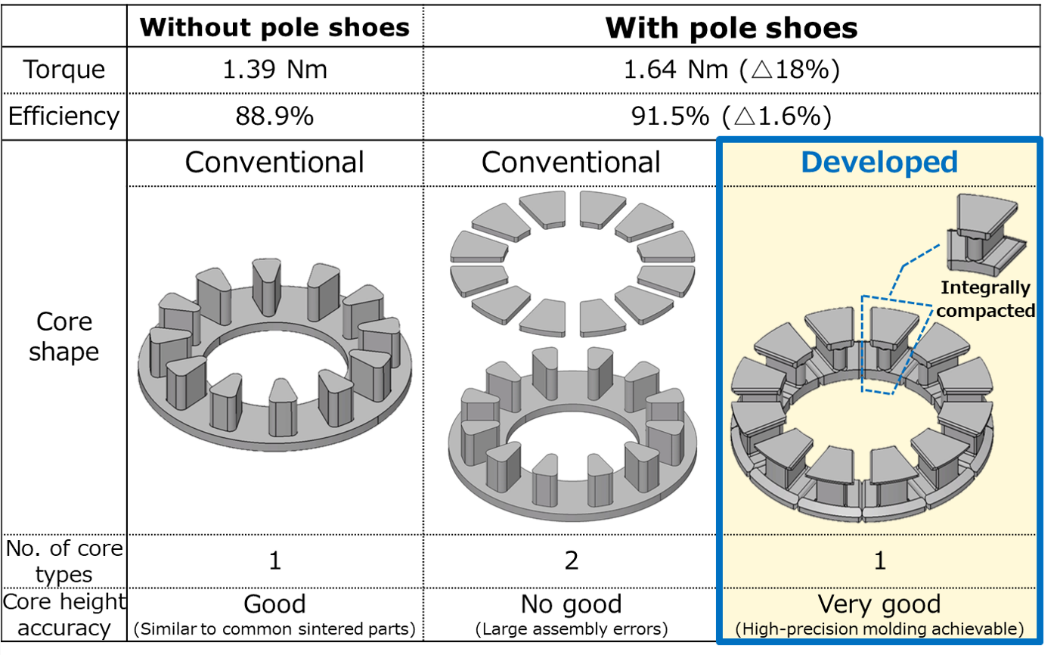
Pole shoe integrated core for axial flux motors developed by SEI.
More Sustainable Material Solutions
Perhaps one of the biggest benefits of using Ansys Granta in material identification that SEI can identify the environmentally friendly materials supporting its unique SMCs. In contrast to electrical steel sheets manufactured mainly in blast furnaces, scrap iron is the main raw material. In addition, because they have near-net shape, the yield of the SMC raw materials involved is high, and CO2 emissions during the manufacturing process are small. In addition, the core can be crushed after use and used again as a raw material for the SMCs or other powder metallurgy products.
Accurate identification of materials and their related properties in Ansys Granta leads to new discoveries in sustainable solutions of the future. Read what the materials team at Ansys have to say about taking the right steps to material-led eco-design.